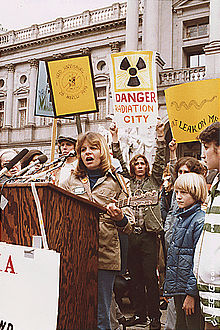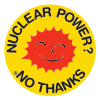
The Diablo Canyon Power Plant is a nuclear power plant near Avila Beach in San Luis Obispo County, California. Following the permanent shutdown of the San Onofre Nuclear Generating Station in 2013, Diablo Canyon is now the only operational nuclear plant in California, as well as the state's largest single power station. It was the subject of controversy and protests during its construction, with nearly two thousand civil disobedience arrests in a two-week period in 1981.

The Seabrook Nuclear Power Plant, more commonly known as Seabrook Station, is a nuclear power plant located in Seabrook, New Hampshire, United States, approximately 40 miles (64 km) north of Boston and 10 miles (16 km) south of Portsmouth. It has operated since 1990. With its 1,244-megawatt electrical output, Seabrook Unit 1 is the largest individual electrical generating unit on the New England power grid. It is the second largest nuclear plant in New England after the two-unit Millstone Nuclear Power Plant in Connecticut.

The Clamshell Alliance is an anti-nuclear organization founded in 1976 to oppose the Seabrook Station nuclear power plant in the U.S. state of New Hampshire. The alliance has been dormant for many years.
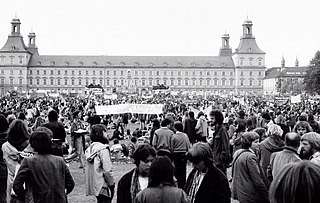
The anti-nuclear movement is a social movement that opposes various nuclear technologies. Some direct action groups, environmental movements, and professional organisations have identified themselves with the movement at the local, national, or international level. Major anti-nuclear groups include Campaign for Nuclear Disarmament, Friends of the Earth, Greenpeace, International Physicians for the Prevention of Nuclear War, Peace Action, Seneca Women's Encampment for a Future of Peace and Justice and the Nuclear Information and Resource Service. The initial objective of the movement was nuclear disarmament, though since the late 1960s opposition has included the use of nuclear power. Many anti-nuclear groups oppose both nuclear power and nuclear weapons. The formation of green parties in the 1970s and 1980s was often a direct result of anti-nuclear politics.
The Abalone Alliance (1977–1985) was a nonviolent civil disobedience group formed to shut down the Pacific Gas and Electric Company's Diablo Canyon Power Plant near San Luis Obispo on the central California coast in the United States. They modeled their affinity group-based organizational structure after the Clamshell Alliance which was then protesting the Seabrook Nuclear Power Plant in coastal New Hampshire. The group of activists took the name "Abalone Alliance" referring to the tens of thousands of wild California Red Abalone that were killed in 1974 in Diablo Cove when the unit's plumbing had its first hot flush.
Nuclear history of the United States describes the history of nuclear affairs in the United States whether civilian or military.

The anti-nuclear movement in the United States consists of more than 80 anti-nuclear groups that oppose nuclear power, nuclear weapons, and/or uranium mining. These have included the Abalone Alliance, Clamshell Alliance, Committee for Nuclear Responsibility, Nevada Desert Experience, Nuclear Information and Resource Service, Physicians for Social Responsibility, Plowshares Movement, United Steelworkers of America (USWA) District 31, Women Strike for Peace, Nukewatch, and Women's International League for Peace and Freedom. Some fringe aspects of the anti-nuclear movement have delayed construction or halted commitments to build some new nuclear plants, and have pressured the Nuclear Regulatory Commission to enforce and strengthen the safety regulations for nuclear power plants. Most groups in the movement focus on nuclear weapons.
The 1970s proved to be a pivotal period for the anti-nuclear movement in California. Opposition to nuclear power in California coincided with the growth of the country's environmental movement. Opposition to nuclear power increased when President Richard Nixon called for the construction of 1000 nuclear plants by the year 2000.
The Shad Alliance was an active and influential anti-nuclear group which used non-violent, direct action methods in the late 1970s and 1980s. It grew out of the "alliance movement" started in New Hampshire by the Clamshell Alliance. The Shad Alliance linked anti-nuclear activists on Long Island, in New York City, and throughout the Hudson River area, and targeted the Indian Point and Shoreham nuclear power plants.
Anti-nuclear organizations may oppose uranium mining, nuclear power, and/or nuclear weapons. Anti-nuclear groups have undertaken public protests and acts of civil disobedience which have included occupations of nuclear plant sites. Some of the most influential groups in the anti-nuclear movement have had members who were elite scientists, including several Nobel Laureates and many nuclear physicists.
Paul Gunter is a co-founder of the Clamshell Alliance anti-nuclear group, who was arrested at Seabrook Station Nuclear Power Plant for non-violent civil disobedience on several occasions. An energy policy analyst and activist, he has been a vocal critic of nuclear power for more than 30 years. Gunter worked as the Director of the Reactor Watchdog Project for Nuclear Information and Resource Service for almost 20 years. In 2007, Gunter joined Beyond Nuclear as their nuclear reactor specialist. He has made many national and international television, radio, and conference appearances and is quoted in the press.
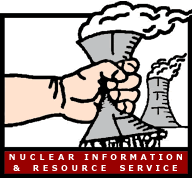
More than 80 anti-nuclear groups are operating, or have operated, in the United States. These include Abalone Alliance, Clamshell Alliance, Greenpeace USA, Institute for Energy and Environmental Research, Musicians United for Safe Energy, Nevada Desert Experience, Nuclear Control Institute, Nuclear Information and Resource Service, Public Citizen Energy Program, Shad Alliance, and the Sierra Club. These are direct action, environmental, health, and public interest organizations who oppose nuclear weapons and/or nuclear power. In 1992, the chairman of the Nuclear Regulatory Commission said that "his agency had been pushed in the right direction on safety issues because of the pleas and protests of nuclear watchdog groups".

Anti-nuclear protests began on a small scale in the U.S. as early as 1946 in response to Operation Crossroads. Large scale anti-nuclear protests first emerged in the mid-1950s in Japan in the wake of the March 1954 Lucky Dragon Incident. August 1955 saw the first meeting of the World Conference against Atomic and Hydrogen Bombs, which had around 3,000 participants from Japan and other nations. Protests began in Britain in the late 1950s and early 1960s. In the United Kingdom, the first Aldermaston March, organised by the Campaign for Nuclear Disarmament, took place in 1958. In 1961, at the height of the Cold War, about 50,000 women brought together by Women Strike for Peace marched in 60 cities in the United States to demonstrate against nuclear weapons. In 1964, Peace Marches in several Australian capital cities featured "Ban the Bomb" placards.
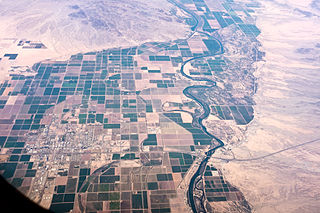
The Sundesert Nuclear Power Plant was a proposed California nuclear power station, formally submitted in 1976. Facing firm opposition from the state's Governor Jerry Brown and denied a permit by a state agency, plans for the construction of the power facility were rejected in 1978 after 100 million dollars had been spent towards its construction. The Sundesert proposal was the last major attempt to build a nuclear plant in California.
The Montague Nuclear Power Plant was a proposed nuclear power plant to be located in Montague, Massachusetts. The plant was to consist of two 1150 MWe General Electric boiling water reactors. The project was proposed in 1973 and canceled in 1980, after $29 million was spent on the project.
The Critical Mass Energy Project was formed by Ralph Nader in 1974 as a national anti-nuclear umbrella group. It was probably the largest national anti-nuclear group in the United States, with several hundred local affiliates and an estimated 200,000 supporters. Part of Nader's support comes from a Green agenda and the belief that "the most important office in America for anyone to achieve is full-time citizen." The organization's main efforts were directed at lobbying activities and providing local groups with scientific and other resources to campaign against nuclear power.

The nuclear energy policy of the United States began in 1954 and continued with the ongoing building of nuclear power plants, the enactment of numerous pieces of legislation such as the Energy Reorganization Act of 1974, and the implementation of countless policies which have guided the Nuclear Regulatory Commission and the Department of Energy in the regulation and growth of nuclear energy companies. This includes, but is not limited to, regulations of nuclear facilities, waste storage, decommissioning of weapons-grade materials, uranium mining, and funding for nuclear companies, along with an increase in power plant building. Both legislation and bureaucratic regulations of nuclear energy in the United States have been shaped by scientific research, private industries' wishes, and public opinion, which has shifted over time and as a result of different nuclear disasters.

The politics of New England has long been defined by the region's political and cultural history, demographics, economy, and its loyalty to particular U.S. political parties. Within the politics of the United States, New England is sometimes viewed in terms of a single voting bloc. All of the twenty-one congressional districts in New England are currently represented by Democrats. In the Senate, nine Democrats, two Independents, and one Republican represent New England. The Democratic candidate has won a plurality of votes in every State in New England in every presidential election since 2004, making the region considerably more Democratic than the rest of the nation.
